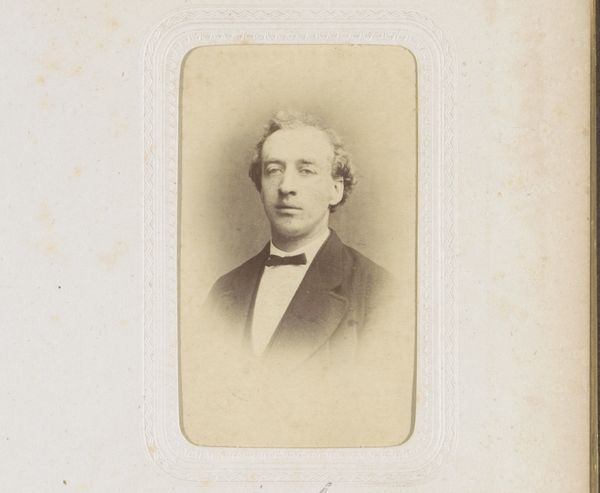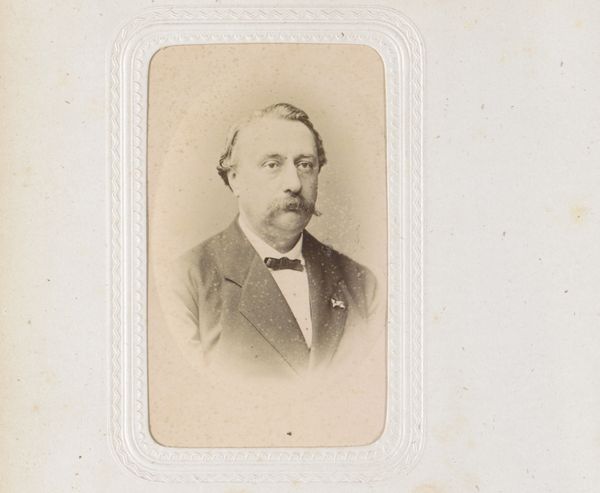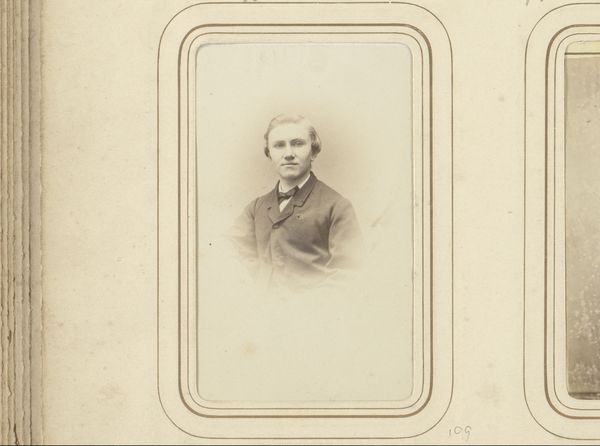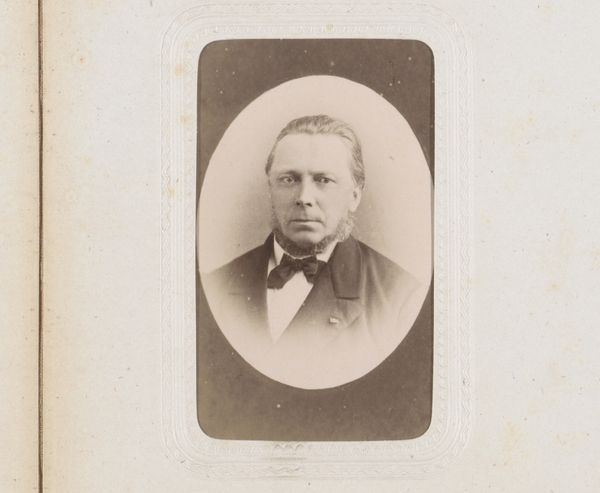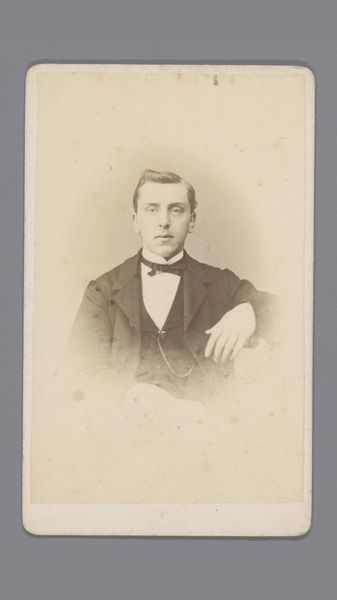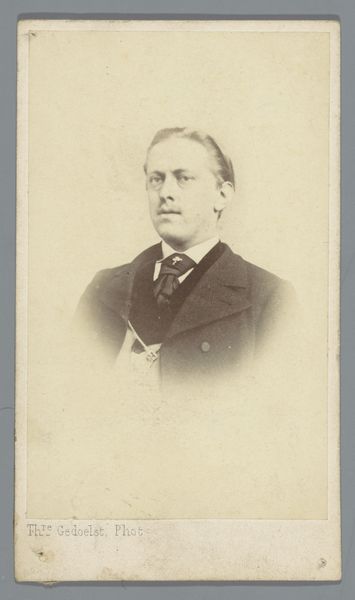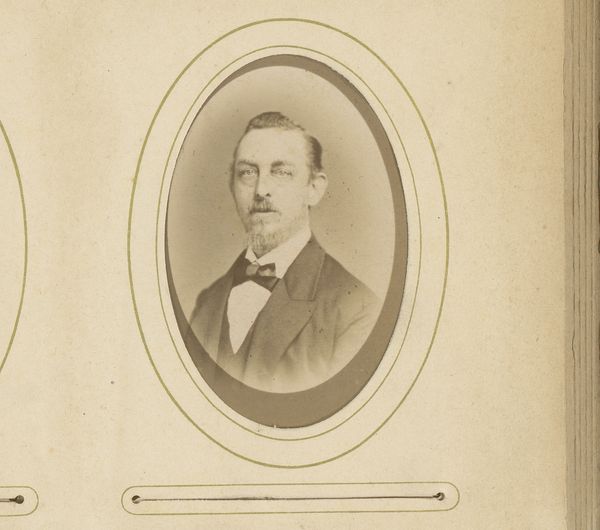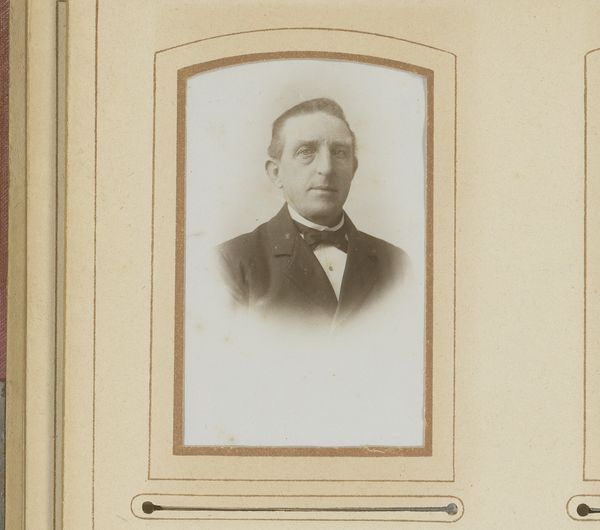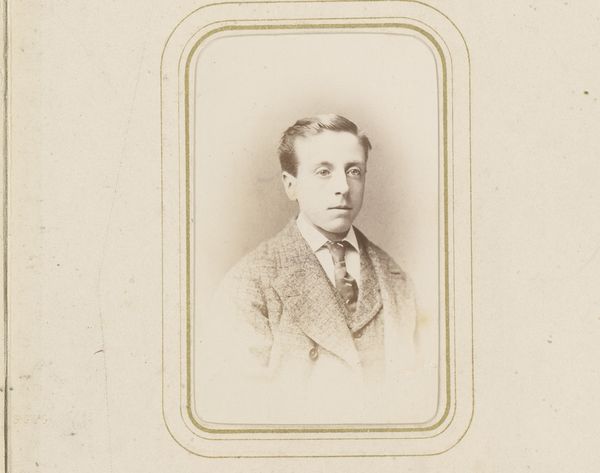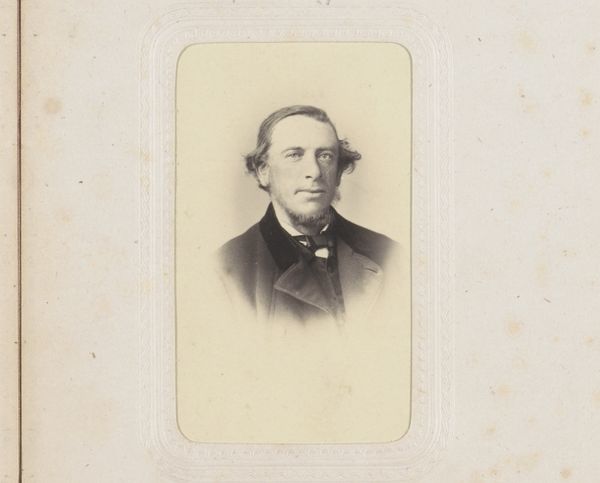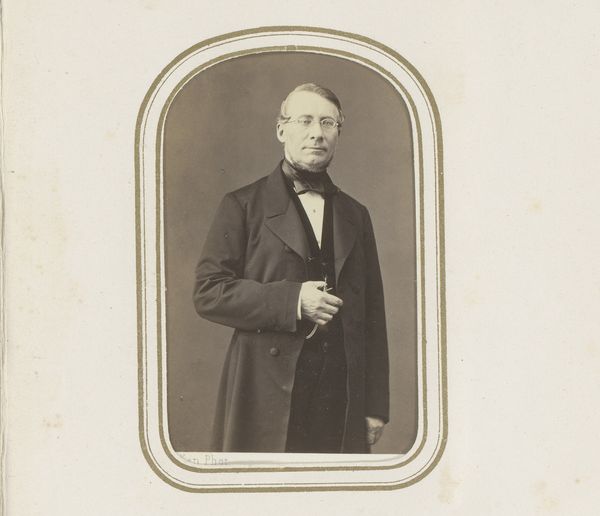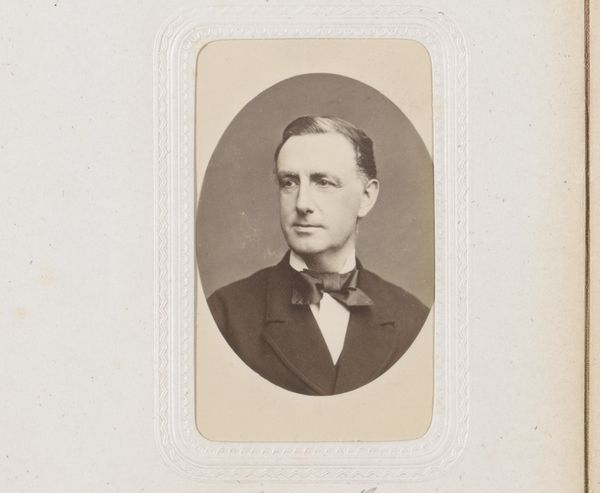
photography, gelatin-silver-print
#
portrait
#
photography
#
historical photography
#
portrait reference
#
gelatin-silver-print
#
19th century
#
realism
Dimensions: height 82 mm, width 50 mm
Copyright: Rijks Museum: Open Domain
Editor: This is "Portret van J. Dirks," a gelatin silver print made sometime between 1875 and 1879 by Johannes Wilhelmus Franciscus Offenberg. It’s a pretty standard portrait, I guess, but the process seems so… involved compared to how we take photos now. What do you see in this piece? Art Historian: What interests me is less the sitter, and more the materiality. Think about what it meant to create a portrait at this time. The labor involved – the photographer's skill in preparing the gelatin silver emulsion, coating the glass plate, exposing and developing the image… the subject had to sit still for a prolonged exposure! Editor: That's true, it’s not just pointing and shooting, right? There's the darkroom work too… the chemical processes… Art Historian: Precisely! It begs the question: What power did the photographer wield in shaping this representation? And for whom was this image ultimately produced, consumed and preserved? Was it for private or public consumption? How might this relatively accessible form of portraiture have disrupted older hierarchies of representation reserved for the wealthy? Editor: So, thinking about the print itself… as an object that circulated. It wasn’t just about capturing likeness. Art Historian: Exactly. We need to look at the conditions of its production and circulation to understand its significance. Photography wasn't just about "capturing reality," but about transforming the social and material landscape of representation. Think of the impact this had on painting, for example. Editor: I see… I never really considered the wider social impact of photographic materials like this one. I was so focused on the person. Art Historian: Material analysis helps reveal the broader forces at play shaping our visual world. Keep questioning not just "what does it mean?" but "how was it made and what does it do?" Editor: That makes so much sense! Thanks for shifting my perspective.
Comments
No comments
Be the first to comment and join the conversation on the ultimate creative platform.
